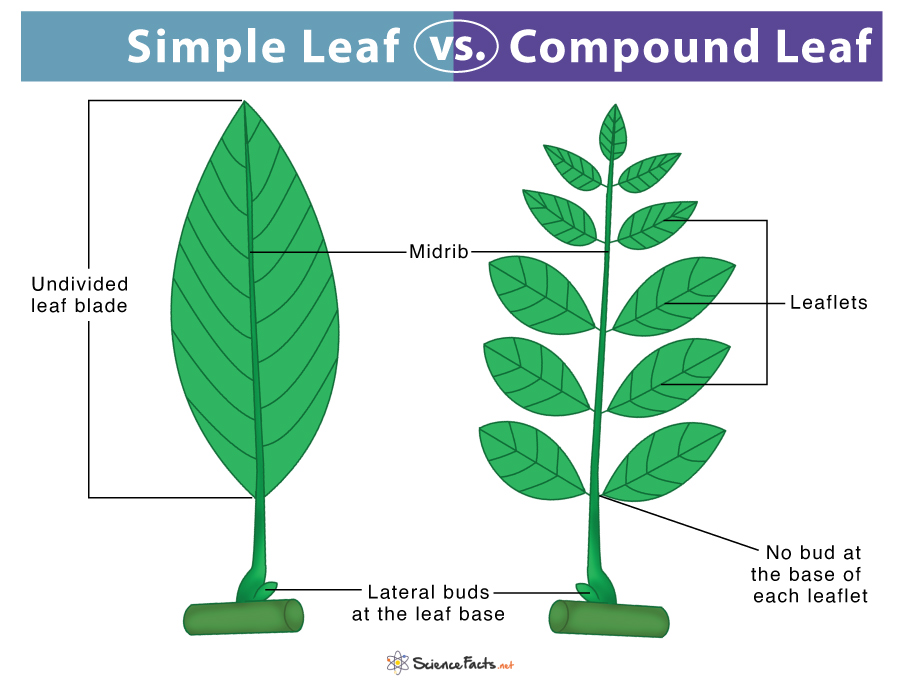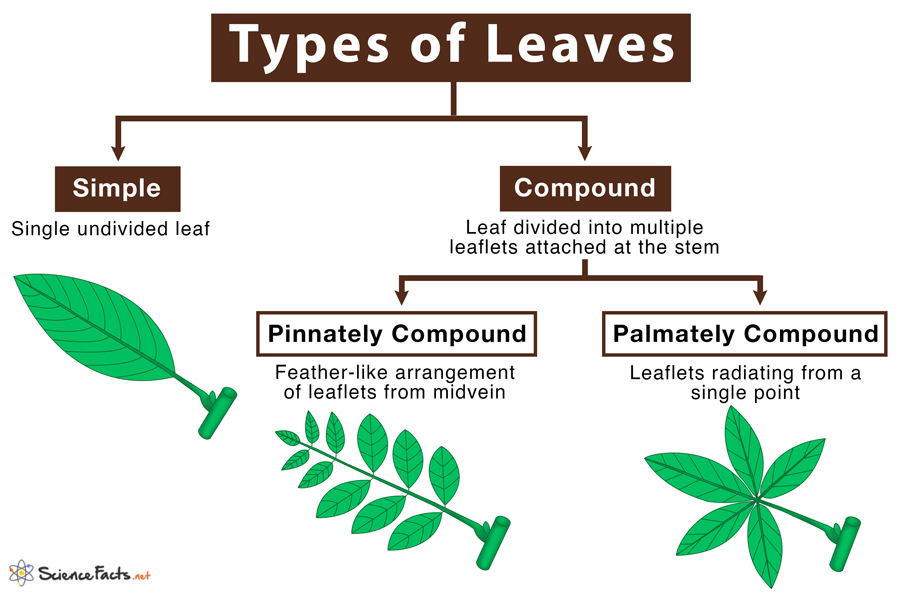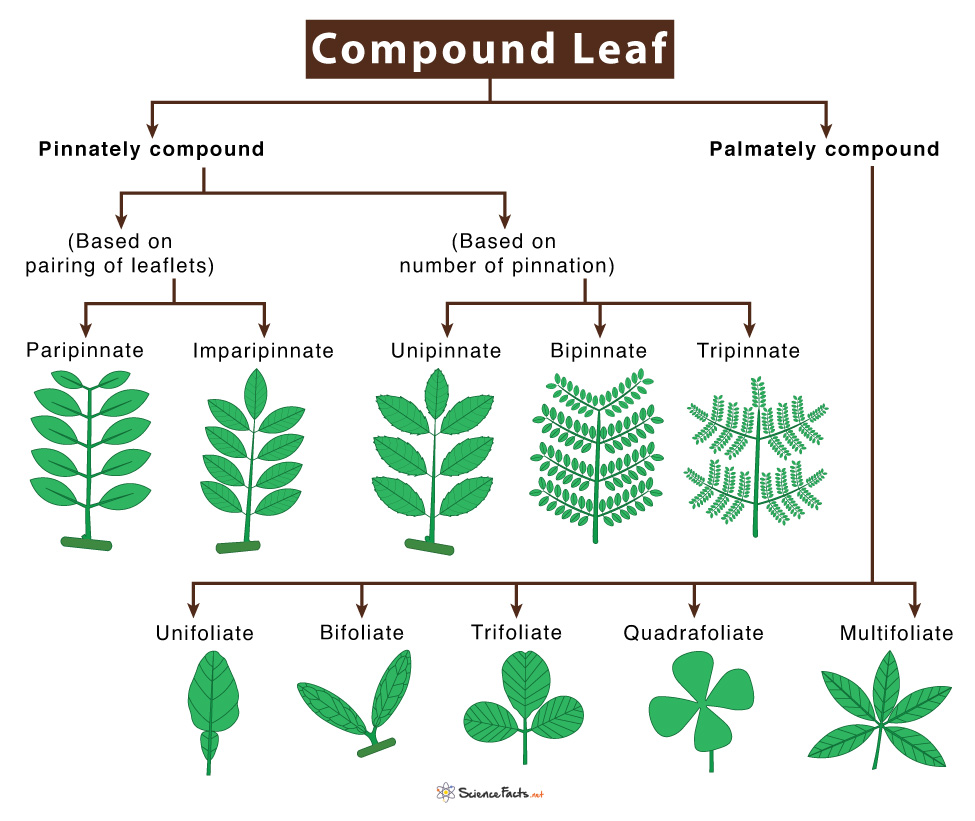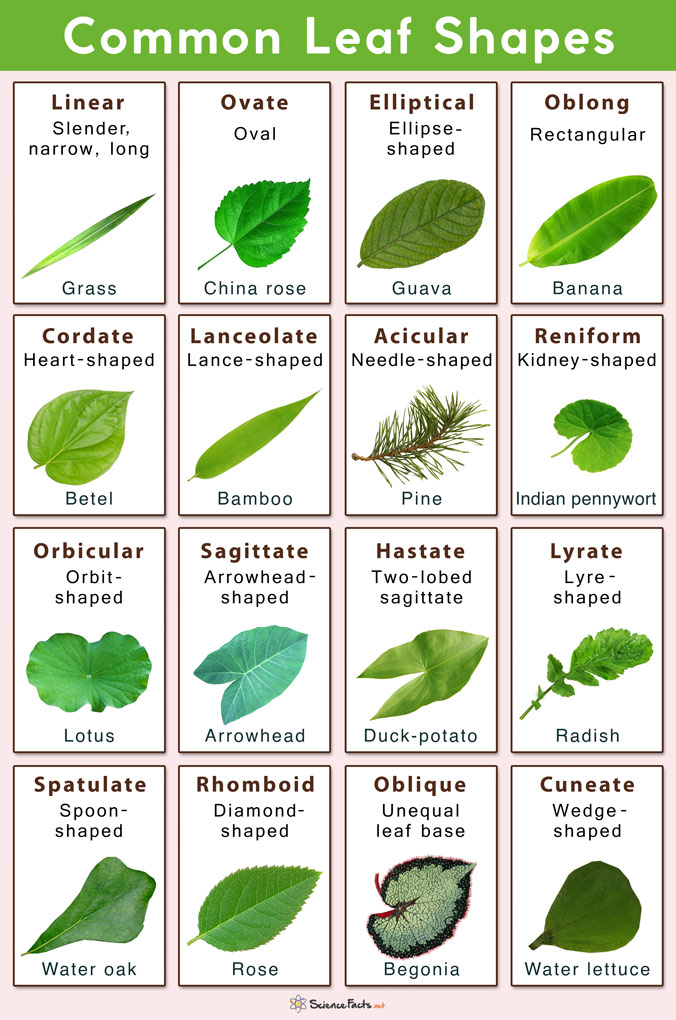Different Types of Leaves in Plants and Trees
Broadly all leaves are classified into two main types, based on the arrangement of the leaf lamina (the broad, thin, flattened surface of the leaf), which is the site of photosynthesis and transpiration in plants. They are given below.
What are the Two Basic Types of Leaves
1. Simple Leaves
It is a single leaf with undivided leaflets that are directly attached to the stem. It is always attached to a twig by its stem or the petiole.
Examples: Maple, oaks, banana, guava, mango, black cherry, black gum and, sweat gum.
2. Compound Leaves
A leaf that is composed of multiple leaflets that are attached to the midvein, and having their own stalk.
Examples: Neem, rose, clover, desert cotton, poison ivy, horse chestnut and, baobab.
Based on the types of leaf veins and their arrangement in the lamina, compound leaves are further classified into two types:
They are leaflets arranged symmetrically along the center of the leaf, where each leaflet appears to be attached or pinned to the midrib making the leaf look like a feather.
Based on pairing of leaflets pinnately compound leaves are categorized into the following types:
- Paripinnate (even-pinnate): Leaflets are borne in pairs along the rachis, ending with a pair of leaflets on either side
- Imparipinnate (odd-pinnate): Unlike paripinnate, here, a single leaflet is present at the anterior terminal end of the rachis
Examples: Pistachia lenticulus (paripinnate), Robinia (imparipinnate).
Depending on the number of times the leaflet is attached to the midrib (pinnation), pinnately compound leaves are categorized into the following types:
- unipinnate – single compound leaf attached to the midrib in an opposite fashion
- bipinnate – single leaflets of the unipinnate leaf gets replaced with unipinnate leaves
- tripinnate – single leaflets of the unipinnate leaf gets replaced with bipinnate leaves
Examples: Azadirachta indica (unipinnate), Mimosa pudica (bipinnate) and, Moringa oleifera (tripinnate).
They are leaflets radiating outwards from the end of the petiole, similar to fingers of the palm of our hands.
Based on the number of leaflets, the palmately compound leaf is categorized into the following types:
- unifoliate – one leaflet
- bifoliate – two leaflets
- trifoliate – three leaflets
- quadrifoliate – four leaflets
- multifoliate – five or more leaflets
Examples: Citrus limon (unifoliate), Bauhinia yunnanensis (bifoliate), Acer cissifolium (trifoliate), Oxalis (quadrifoliate) and, Umbrella plant (multifoliate).
Simple Leaf vs. Compound Leaf

| Simple leaf | Compound leaf |
|---|---|
| Undivided leaf blade. | Leaf blade divided into leaflets, attached to the midrib. |
| Lateral bud present at the base of the petiole. | Lateral bud absent at the base of each leaflet. |
| Example: Mango, guava, oak. | Example: Rose, neem, tamarind. |
As mentioned above, these are the primary classification of leaves. However, they are also commonly categorized based on the shape of the leaf, and sometimes the plants they are found in. These are given below.
Types of Leaves Based on their Shape
Types of Leaves Based on the Plants and Trees They are Found in
1) Fronds – Leaf of fern plants such as club-mosses and horsetails
2) Leaves of conifer – Found in plants such as fir and pine
3) Leaves of angiosperm – Leaves of common flowering plants such as rose, dahlia and, sunflower
4) Sheath leaves – Elongated and tubular leaves as found in variety of grasses
5) Specialized and unusual leaves – Leaves of insect-eating plants such as pitcher plant and venus flytrap.
-
References
Article was last reviewed on Thursday, February 2, 2023







Wow very nice
I am Very Happy to meet this site!
Good lesson
lovely presentation of leaf types for students.
Super